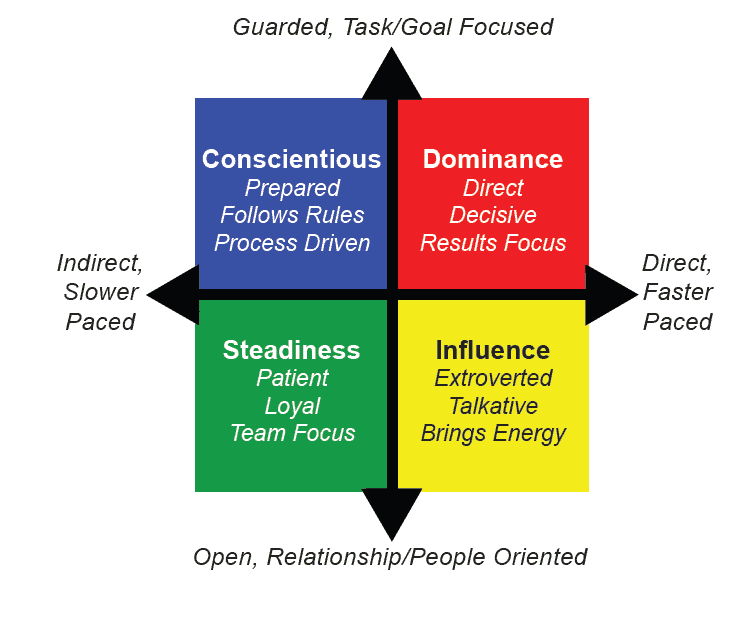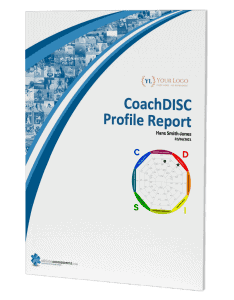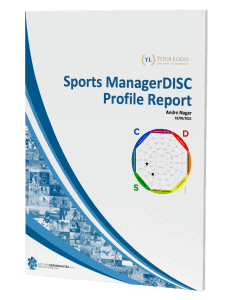The DISC Model Explained
At its simplest, DISC Profiling measures a person’s degree of Dominance, Influence, Steadiness, and Conscientious behavior. It is based on the four-quadrant behavioral model below.
The model explains the behavior of people with high degrees of Dominance, Influence, Steadiness, and Conscientious.
For example, someone with a high level of Dominance (‘high D’) is direct and faster-paced (x-axis); guarded and goal-focused (y-axis). Their behavior is described as direct, decisive and results focused.
In contrast, someone who has a high level of Steadiness (‘high S’) is indirect and slower-paced (x-axis); open and relationship -orientated (y-axis). Their behavior is described as patient, loyal and team focused.

While the model is quite simple, you can also delve much deeper into its theory and application to truly master this area of expertise, which is what the Athlete Assessments’ DISC Profiles specifically do. There is no best or worst DISC Profile and our aim is never to ‘improve’ your DISC Profile. Instead, the focus is on developing self-awareness, knowing what works for you and what doesn’t, and ultimately knowing what behaviors will produce the best results as an individual and when working in a team.
DISC was first developed in the 1920’s and has been heavily used in business since the 1960’s and tailored to sport by Athlete Assessments back in 2007. Read more about the history of DISC Profiling here.
Athlete Assessments’ DISC Profiles use proven techniques based on decades of behavioral research and are created and used specifically for sport. There are three different types of DISC Profiles, one specifically for coaches (the CoachDISC Profile), athletes (the AthleteDISC Profile) and sports administrators and other professionals (the Sports ManagerDISC Profile).
Get practical strategies to coach athletes to their individual needs. Know the behaviors producing their best performances for greater consistency when it counts the most. Help your athletes build self-awareness to make improvements and take greater responsibility for their behavior, on and off “the field”. Find out more!
The distinguishing factor of great Coaches is their constant pursuit for the competitive edge, in their athletes and themselves. Coaches will better understand their coaching styles (and their fellow-Coaches’ and staff) to find new ways to further improve their coaching and communication with athletes and others. Their coaching results will only further improve, guaranteed! Find out more!
Provide your people with a comprehensive understanding of themselves and those they work with. It quickly improves communication, working relationships and ultimately results. Use with recruitment, as a foundation for professional development plans or part of a team building exercise. Find out more!
Learn more about Athlete Assessments
DISC Profiling
Learn how to master the people side of sport using DISC Profiling...
What We Do
We specialize in helping our clients create and sustain winning results...
Resources
Stay at the forefront with access to our resources, articles and videos








